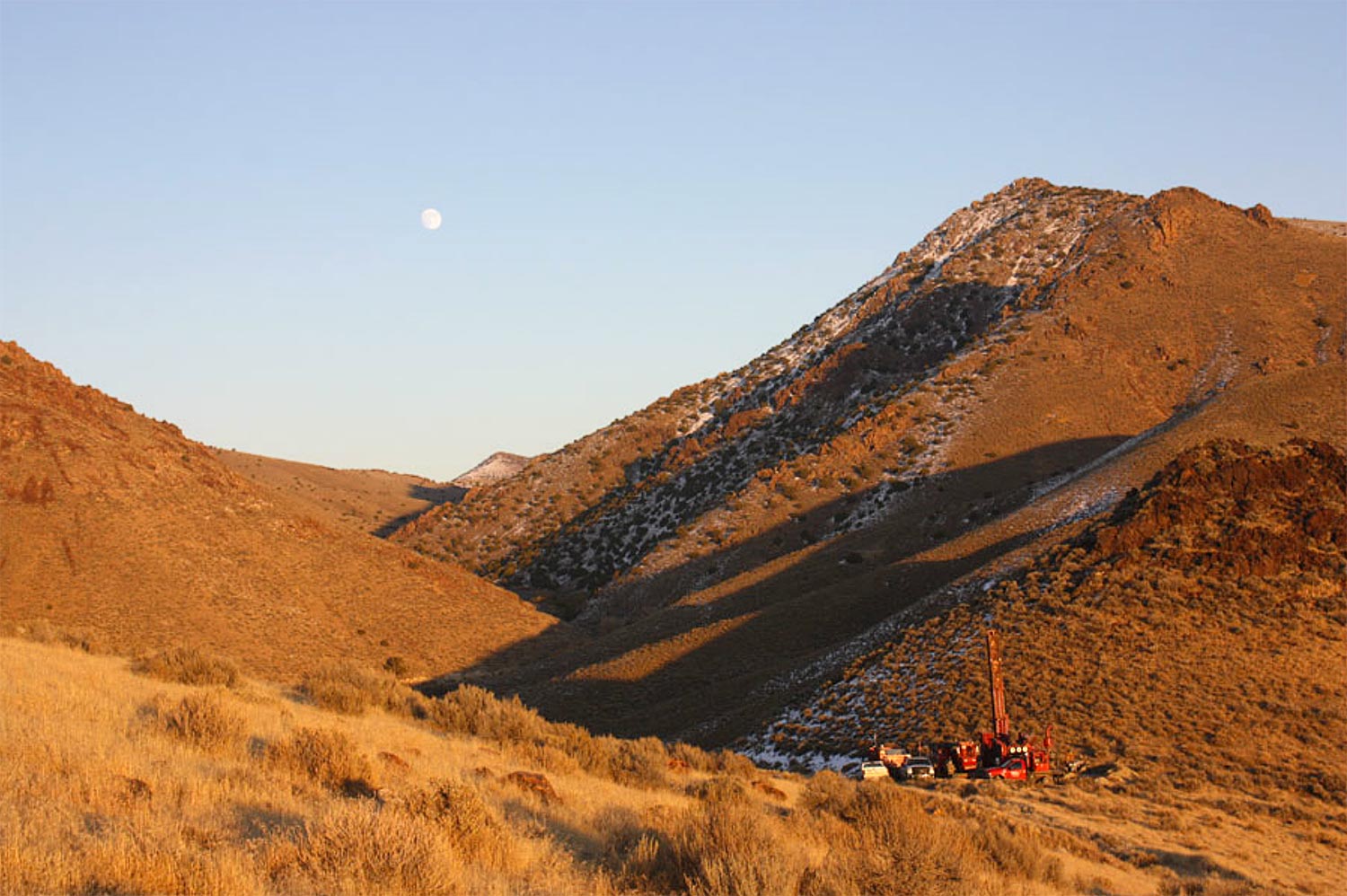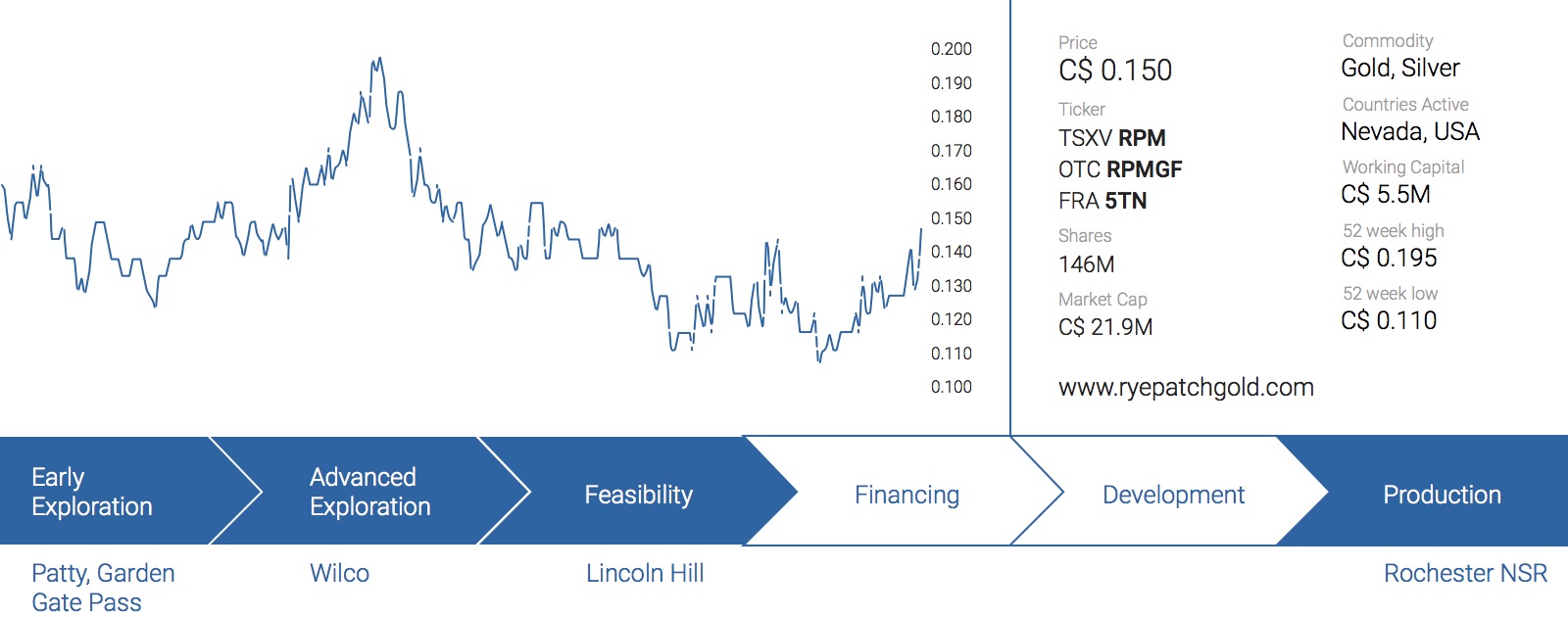2016 seems to be shaping up to be a very important year for Rye Patch Gold (RPM.V) as the company will be zeroing in on releasing additional metallurgical test work which will be used in an updated PEA which we expect to be superior to the previously released PEA. We sat down with CEO Bill Howald for a Q&A session after a busy 2015 wherein Rye Patch has ticked a lot of boxes.
View PDFInterview
For how much longer will Rye Patch continue to receive the royalty payments from Coeur’s Rochester mine?
Based on the current production rates and published mine plan of the Rochester mine by Coeur Mines (CDM.TO, CDE), we are expecting to continue to receive royalty payments for approximately 3.5 more years. This royalty deal provides us with a steady and reliable cash inflow which not only covers our overhead expenses, but also goes a long way to cover our expenses in the field.
May I remind you that we received C$4.8M in royalty payments over the first three quarters of 2015? We are expecting a royalty payment over Q4 that will be similar to the C$1.5M payment we received in October to cover the third quarter of this year.
And as you undoubtedly know, we are using 10% of the royalty proceeds to repurchase shares on the open market, reducing our share count by approximately 2 million shares in the first nine months of 2015.

Would an updated metallurgical test result (indicating a higher recovery rate for the gold) incentivize you to re-think the pit outline in the feasibility study?
Based on our current schedule, we are now expecting to be in a position to publish an updated Preliminary Economic Assessment towards the end of 2016. This updated study will include the phase-2 metallurgical test work and the results of the infill drill program which should increase our confidence in the existing resource and upgrade more ounces to the measured and indicated category. This work will be crucial as we head toward a feasibility study in late 2017.
On top of that, our plan is to also include a first resource estimate at the Gold Ridge zone and the Independence Hill zone located immediately adjacent to the Lincoln Hill project and close to the area where we intend to build the leach pad. We originally staked the claims at Gold Ridge in 2007 and have discovered some very interesting mineralized intercepts in the past few drill programs with approximately 20 meters containing 1.24 g/t AuEq., and all 12 holes of our RC drill program in 2014 have encountered mineralization. It would be great if we could add some tonnage here as that would have a positive impact on the resource and NPV of the Lincoln Hill project as a whole.
At Independence Hill, we were extremely pleased to discover 13.7 meters of in excess of 4 g/t gold and 2/3rd of an ounce silver per tonne in a 2014 drill program at the Looney target. The Octopus target also yielded a 22.9 meter intercept of 0.62 g/t gold and almost 10 g/t silver and suggests that Independence Hill could add significant new resource ounces as well.
Needless to say both Independence Hill and Gold Ridge have the potential to add quite a few ounces to the current, very preliminary mine plan at Lincoln Hill.

The metallurgical drill program has been completed and the updated met tests can be expected any week now. In a previous report, we indicated it should be possible for Rye Patch to add a crusher to the recovery process to reduce the size of the rock before it reaches the leach pad. Do you agree with our assessment that this might be the most important catalyst for Rye Patch in 2016?
Yes, we are indeed in the final phase of an additional metallurgical test run, and we expect to have the results from the column leach tests in the first quarter of 2016. You are correct when you state a higher recovery rate could and should be possible, and if the metallurgical test results indeed confirm our expectations, this could be a very important milestone for the project as it would most definitely improve the economics of Lincoln Hill.
What are the exploration/development plans at Lincoln Hill in 2016?
Well, as said we intend to complete the infill drilling and we will have drilled 12 additional holes at Gold Ridge for a total of 1,500 meters. The metallurgical test results will provide a lot of information about what we should do next, and of course we’ll invest a lot of time and effort in improving the PEA as much as possible.
As the new metallurgical test results could be a game changer for us, we will very likely also proceed with a 10 tonne bulk sample for even more extensive tests. We would also already like to move ahead with the permitting stage.

Talking about the permitting stage, could you please elaborate a bit more on the permitting process at Lincoln Hill and the expected time line?
Rye Patch gold is progressing through the permitting process with the Bureau of Land management for the Exploration Plan of Operations (PoO) for Lincoln Hill. The recent decision concerning the Greater Sage Grouse in the Western USA has added time to the approval process.
The ability to obtain a 10 tonne bulk sample for metallurgical testing and the in-fill drilling program are dependent on the approval of the PoO. Based on what we now know, we would expect the Plan of Operations to be approved sometime in the first quarter of 2016.
Moving over to the Patty project, where you recently renegotiated the earn-in agreement; will the 2016 drill program focus on Indian Creek, or will the Goldrush target be tested first now?
We have completed our exploration target at Indian Creek and will focus on the Goldrush anticline in 2016 where we have an indication of mineralization from past drilling (105m grading 0.3 g/t Au). We will provide an update on our exploration plans soon and having an extra year will give us time to focus on the right places to drill to make a new discovery along the Cortez trend.
At Patty, the drill bit hasn’t intersected the lower-plate targets yet according to the most recent exploration update. Could you elaborate a bit on what this means (for the non-technical and non-geological people)?
Along the prolific Carlin and Cortez trends, the lower-plate lithologies are the host rocks to the giant Carlin-style gold deposits in east central Nevada. The lower-plate lithologies form a series of limestone, and siltstone that possess the right chemical composition for the deposition of gold. Over the lower-plate rocks are a series of nonreactive lithologies known as the upper-plate assemblage. Because of their chemical make up, the upper-plate rocks do not host large gold deposits and form a geologic point of view, are considered cover rocks.
Our mapping at Patty in the Indian Creek target suggested the lower-plate lithologies were within drillable depths and the structural setting was correct for discovery of a Carlin-style ore body. Remember, Carlin-style deposits tend to be big (>5Mozs) so thats why we want to find one. However, we got the structural interpretation wrong and the drill bit stayed in upper-plate lithologies to depth. There could still be a gold deposit in the the area, but it is much deeper than we predicted and therefore less attractive to find.

Conclusion
We’re confident Rye Patch Gold will make some major steps forward in 2016 as the results from the new metallurgical tests will very likely indicate the recovery rate of the gold will increase rather sharply if Rye Patch would add a crushing-step to the current operating flow sheet. Meanwhile, the company won’t need to return to the capital markets in the foreseeable future as its royalty income from Coeur’s Rochester mine will be sufficient to cover the (majority of the) expenses.
The current enterprise value of the company is approximately C$16M and that’s quite low for a company with prospects that are as promising as Rye Patch.
Rye Patch Gold is a sponsor of the website, we hold a long position. Please read the disclaimer

